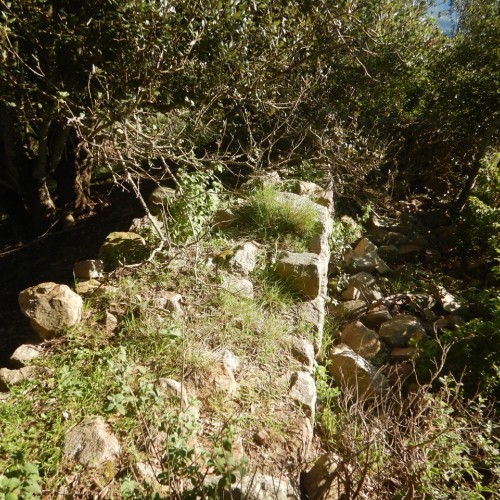
In the middle of the small hill chain, the first foothills of the Capanne massif, dividing the Procchio valley and plain, to the north, from the Campo plain, to the south rises the modest elevation of Mount Castello (228 metres above sea level). As its name suggests, this hill was the site of an ancient Etruscan fortress, one of the many hill forts that defended the island, also found on the mainland in the city of Populonia, built in response to dangers from the sea and possible enemy threats. These forts generally featured boundary walls, often quadrangular, built on top of hills that were normally not very high but situated in strategic positions, overlooking key roads, resource provisioning sites, landing places or locations where valuable metals were processed.
These fortifications visually monitored often wide stretches of coastlines and sea basins, forming genuine visual communication networks looking as far as the promontory of Populonia. Elba also had fortresses on Castiglione di San Martino, Castiglione di Marina di Campo, Monte Fabbrello, Monserrato, Pietra Murata, Le Mura, Volterraio, Mount Serra, Capoliveri, Mount Percoli, Cucculino and Mount Moncione. On Mount Castello, a series of excavation campaigns recovered materials dating from between the end of the 5th century and the middle of the 3rd century BC. The external boundary wall there, made from granite boulders, was 2 metres thick while a more internal wall measured 1.2 metres thick.
The defensive walls rose as high as 4 metres on the south-west side. The dwellings were built of sun-dried clay brick walls topped by a timber structure supporting a roof of large tiles and slabs. The building had two floors: a basement, used as a store, and a first floor. The artifacts found, now housed in the archaeological museums of Marciana and Portoferraio, included several Genucilia plates and over-painted pottery of Etruscan production, cups from the Atelier des Petites Estampilles, Punic and Greek-Italic amphorae, and a fragment of a terracotta woman's head. Of particular interest is the dwelling floor in the opus signinum, also containing numerous fragments of iron slag.
Numerous remnants of combustion bear witness to a fire believed to have brought about the destruction of the fortress, probably in around 259 BC, at the time of the Roman conquest of Etruria and the Island of Elba. As a testament to the site's strategic position, military posts were built here in the Second World War.



